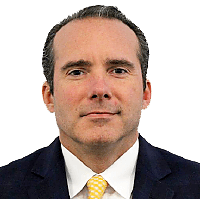- BLOG HOME
- »
- Verification Services
- »
- National Student Clearinghouse: Education’s Partner to Open Doors Now and in the Future

National Student Clearinghouse: Education’s Partner to Open Doors Now and in the Future

In this two-part series, learn about the power of the Clearinghouse’s data to make a transformational difference for the education community.
Over the past year, the pandemic coupled with the growing conversation on racial justice has had a significant impact on America’s education system. Communities with high poverty rates have often struggled to adapt to remote learning.
The National Student Clearinghouse Research Center’s data shows a nearly 6% decline in spring undergraduate enrollment and an 11.3% drop in community college enrollment, a path that is especially important for students from disadvantaged communities. The Clearinghouse is working to provide leaders with data that can help them pinpoint and address these issues and more.
Pepe Carreras, Vice President of Education Solutions, says that social equity and transforming student lives have been at the heart and soul of higher education since its inception. For Pepe, the Clearinghouse’s work is personal because he has seen the impact that education can have. After being an average student and struggling to connect at school, he grew to love education later in life.
“Never in my wildest dreams did I think that education would open the number of doors it opened for me,” said Carreras, who attended high school in Puerto Rico, has a bachelor’s degree from Boston College, and an MBA from the Northwestern University Kellogg School of Management. “I never imagined what it could do. And I fear that there are so many people who go through the normal education process, don’t graduate, and never realize these opportunities.”
Pepe sees that disadvantaged students are discouraged by the system and fail to see the opportunities available. “Students and parents alike have to make so many difficult choices along the way, especially underrepresented minorities, and the system doesn’t really make it easy for them.”
As America recovers from the pandemic, Pepe sees a once-in-a-generation opportunity to rework higher education’s priorities and to provide hope for students. “Whatever we do going forward will dictate our ability as a country to not only come out of this on the other side but also to provide lifelines to all of these different communities across the country to better themselves and help rebuild.”
Clearinghouse President and CEO Rick Torres believes education can help break the cycle of poverty, and that’s why he has committed his career to helping institutions better understand the lives of students through data. Torres explains that in high poverty schools, just 21% have completed a credential after six years, while 53% have done so in low poverty schools. These are the types of statistics that can cut through the noise and galvanize decision-makers to bring about positive change.
Torres said, “The role of the Clearinghouse is to help institutions and policymakers who really care about these issues, to basically cut through the data that doesn’t matter and get to the data that does matter.”
In part two of this series, Vice President Carreras discusses the value of the Clearinghouse’s data to close the education gap now and future opportunities to support institutions, learners, and employers.
“The role of the Clearinghouse is to help institutions and policymakers who really care about these issues, to basically cut through the data that doesn’t matter and get to the data that does matter.”
Rick Torres
Clearinghouse President and CEO
Additional Resources:



